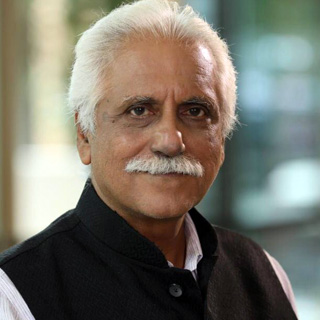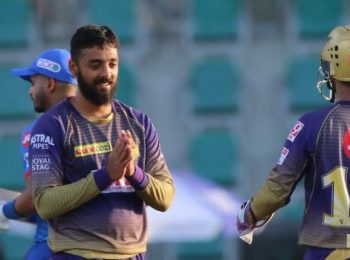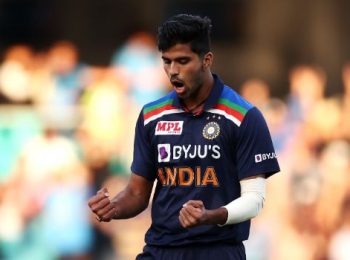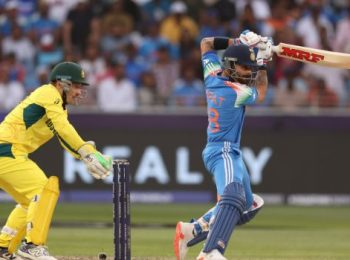There is no more riveting rivalry in cricket than India versus Pakistan. It draws in fans and viewers from all over the world and more than 1.5 people are projected to tune in for Sunday’s game when the arch rivals square up against each other.
The wisdom in putting these two teams against each other so early in a tournament has frequently been questioned. The losing obviously comes under duress for the remainder of the tournament, so wouldn’t this affect prospects of an India-Pakistan final, meeting in the final, which is where fans, sponsors, everybody want them to be?
Prior to the 2007 T20 World Cup concern which dictated the planning of itineraries for tournaments conducted by the ICC. The draw would be contrived to enhance the possibility of these teams meeting in the knock-out stage, and fingers crossed, in the final.
The inaugural T20 WC in 2007, of course, was extraordinary in that India and Pakistan played their first match against each other and also met in the final. Both matches were edge-of-the-seat contests. Played against the backdrop of the unique love-hate sentiments that binds and divides the two countries, the tournament became a blockbuster of mammoth dimensions.
The apprehension of having an early match between India and Pakistan in a tournament was hit for a six in 2007.In any case, the lesson from several earlier tournaments where the draw was contrived to ensure an Indo-Pak match in the knock-out phase had not really worked.
For instance, India and Pakistan were in separate groups in the 1999, 2003 ODI World Cups but did not meet in a knock out match, with one or both teams fizzling out sooner.
In the 2011 ODI World Cup the two teams did meet in the quarter final. India won this match and then went on to win the final against Sri Lanka. But the box-office highlight of the tournament was still the quarter-final against Pakistan
The clear message was that Indo-Pak matches played at any stage of a tournament will be standalone blockbusters.
In fact, in the 2015 ODI World Cup and 2021 T20 World Cup, India and Pakistan played each other first-up. Both matches were rousing successes, confirming that the box-office appeal of this rivalry was independent of everything else that happens in a tournament.
In fact, having an India-Pakistan match in the very early stages was giving tournaments a much- needed booster shot. If they met again at a later stage, treat it as a windfall!
That’s the background. What will matter in the Asia Cup, however, is the current form of players from both teams, their appetite for competition, and ambition to win.
Both India and Pakistan have done extremely well in white ball cricket – whether ODIs or T20s – in recent weeks. But questions around team selection for both have not been entirely resolved.
For instance, Pakistan is struggling to find proven, in-form, consistent top order batsmen apart from the magnificent Babar Azam and resourceful Mohamed Rizwan.
India has a cluster of classy and experienced top order batters. But K L Rahul has returned to international cricket after a long time away because of injury. In Zimbabwe, he was clearly not in his best rhythm. He clearly has some catching up to do.
And what of Virat Kohli, who has had a protracted lean trot since his last international century in late 2019? After taking time off for rest and recharge, will he be his old self again?
Kohli’s place in the T20 World Cup only becomes certain if he gets big scores in The Asia Cup, else he is on slippery ground.
Both teams are also at less than full strength in this tournament in the pace bowling department. India will be missing ace Jasprit Bumrah and T20 specialist Harshal Patel, both currently in rehab in the National Cricket Academy in Bangalore.
Pakistan suffered a massive setback when spearhead Shaheen Afridi pulled out last week because of injury. On Thursday, Mohamed Wasim also reported an injury and his participation remains in doubt as I write this piece.
Both teams look a trifle below par, therefore, heading into the opening match. Of course, this will not diminish the intensity of competition. Fans on either side of the border can be unforgiving as players from both teams know well.
India lost badly the last time the teams met – in the T20 WC in UAE – and will be seeking revenge, Pakistan, on the other hand, will look to make their current supremacy into a stranglehold.
I’ve dwelt at some length on India and Pakistan for obvious reasons. But this doesn’t mean the other four teams are pushovers. The T20 format is highly unpredictable and topsy-turvy results are frequent. India and Pakistan will take Bangladesh, Sri Lanka, Afghanistan and even Hong Kong lightly at their own peril.
For all teams, this tournament comes at an opportune time. It is like a dress rehearsal for the T20 World Cup due in Australia in just about four weeks. Since issues/dilemmas of finalising squads for the World Cup still remain, the Asia Cup iscritical for selectors, coaches, captains, and players.



























